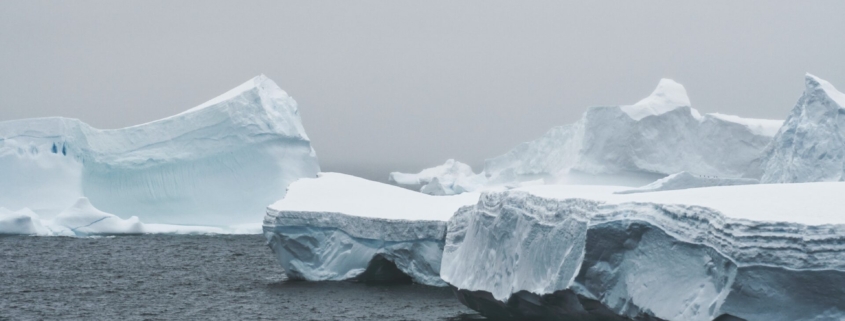Antarctic warming makes catastrophic sea level rise inevitable
Another day, another scientific study providing evidence of the terrifying extent of the global climate catastrophe. This time, it’s about global sea levels.
The study, titled “Unavoidable future increase in West Antarctic ice-shelf melting over the twenty-first century”, was published in the journal Nature Climate Change in October. It concludes that the West Antarctic ice sheet may already be beyond saving, and that rapidly accelerated melting of the Antarctic ice shelves over the next few decades is now unavoidable even under best case warming scenarios.
Kaitlin Naughten—an ocean modeller with the British Antarctic Survey and lead researcher of the study—was blunt about its significance. The kind of sea level rises that will be caused by this melting, she said, will mean “some coastal communities will either have to build [defences] or be abandoned”.
Scientists have been debating whether Antarctic melting would be gradual and steady—progressing in a linear fashion corresponding to temperature increases—or if there will be “tipping points” that, once reached, will cause the melting to massively accelerate. What this research suggests is that the more “optimistic” of these viewpoints is wrong. We may now already be witnessing a significant tipping point being passed, because of the melting of the crucial ice shelves.
Ice shelves are masses of ice that sit on top of the ocean. The ice shelves around Antarctica play a crucial role in maintaining the stability of the massive ice sheets that sit on top of the continent. The shelves block the flow of the sheets down into the water. When the ice shelves melt, the door is opened for far more rapid melting of ice, as the sheets collapse into the relatively warmer temperatures of the ocean water.
Scientists have projected that if the West Antarctic ice sheet were to melt completely—something which this study suggests may now be unavoidable—it would cause a five metre rise in global sea levels.
This is just the latest piece of bad news from Antarctica. Earlier this year, the area of sea ice around the continent hit a record low, with a net loss of 7.5 trillion tonnes of ice loss since 1997. As one researcher told the Guardian in March, “The rapid decline in sea ice over the past six years is quite remarkable, since the ice cover hardly changed at all in the 35 years before”.
Neither are the Antarctic ice sheets the only ones that are melting. The biggest current contributor to rising sea levels is the Greenland ice sheet, which scientists believe is also beyond saving. Its loss is projected to add seven metres to global sea levels. Around the world, there has been a loss of 28 trillion tonnes of ice between 1997 and 2017.
More than 267 million people currently live in areas less than two metres above sea level. A 2019 study—“New elevation data triple estimates of global vulnerability to sea-level rise and coastal flooding”, published in Nature Communications—found that: “In the case of Antarctic instability, a total of 300 (270–340) million people today live on land indicated as vulnerable to an annual flood event by mid-century, rising to as many as 480 (380–630) million by 2100”.
Whatever the exact trajectory of warming from here, it’s clear capitalist-driven climate change will displace hundreds of millions of people over the coming decades.
Marx once wrote that the capitalist ruling class is “unfit to rule because it is incompetent to assure an existence to its slave within his slavery”. When he wrote this, he meant by “existence” a decent livelihood for workers. Today’s capitalist ruling class is incompetent even to assure, for hundreds of millions of people, the promise of a future above water.

- by Luka Kiernan
- Friday, 03 November 2023




Leave a Reply
Want to join the discussion?Feel free to contribute!